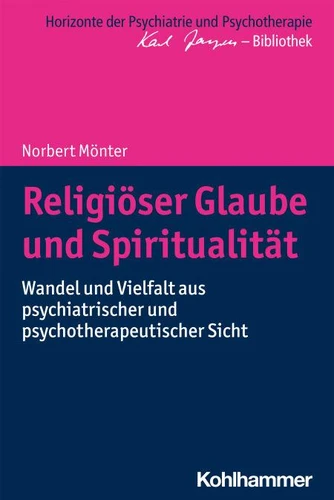Religiöser Glaube und Spiritualität. Wandel und Vielfalt aus psychiatrischer und psychotherapeutischer Sicht
Par : , , ,Formats :
Disponible dans votre compte client Decitre ou Furet du Nord dès validation de votre commande. Le format ePub est :
- Compatible avec une lecture sur My Vivlio (smartphone, tablette, ordinateur)
- Compatible avec une lecture sur liseuses Vivlio
- Pour les liseuses autres que Vivlio, vous devez utiliser le logiciel Adobe Digital Edition. Non compatible avec la lecture sur les liseuses Kindle, Remarkable et Sony
 , qui est-ce ?
, qui est-ce ?Notre partenaire de plateforme de lecture numérique où vous retrouverez l'ensemble de vos ebooks gratuitement
Pour en savoir plus sur nos ebooks, consultez notre aide en ligne ici
- Nombre de pages177
- FormatePub
- ISBN978-3-17-039184-0
- EAN9783170391840
- Date de parution04/05/2022
- Protection num.Digital Watermarking
- Taille4 Mo
- Infos supplémentairesepub
- ÉditeurKohlhammer
Résumé
People=s faith determines both their personal understanding of the world and of themselves, as well as their place in society. In addition to traditional religions and individual spirituality, non-religious ideological belief structures and also liberal worldviews exist. Faith & understood as an elementary imaginative, affective and cognitive mixed function of the human psyche & therefore deserves greater attention in everyday psychiatric and psychotherapeutic practice.
This volume discusses spirituality and the diversity of religious belief in today=s world both from the therapeutic point of view and in relation to its development in the history of humanity. It emphasizes the basic hypothesis that there is a ?reciprocal entanglement= of the poles of faith and knowledge relative to mental health and illness. In his plea for a tolerance of ambiguity in dealing with patients= religious worlds, the author reflects on cultural studies, medical and psychotherapeutic sources, and, last but not least, Karl Jaspers=s positions and analyses.
This volume discusses spirituality and the diversity of religious belief in today=s world both from the therapeutic point of view and in relation to its development in the history of humanity. It emphasizes the basic hypothesis that there is a ?reciprocal entanglement= of the poles of faith and knowledge relative to mental health and illness. In his plea for a tolerance of ambiguity in dealing with patients= religious worlds, the author reflects on cultural studies, medical and psychotherapeutic sources, and, last but not least, Karl Jaspers=s positions and analyses.
People=s faith determines both their personal understanding of the world and of themselves, as well as their place in society. In addition to traditional religions and individual spirituality, non-religious ideological belief structures and also liberal worldviews exist. Faith & understood as an elementary imaginative, affective and cognitive mixed function of the human psyche & therefore deserves greater attention in everyday psychiatric and psychotherapeutic practice.
This volume discusses spirituality and the diversity of religious belief in today=s world both from the therapeutic point of view and in relation to its development in the history of humanity. It emphasizes the basic hypothesis that there is a ?reciprocal entanglement= of the poles of faith and knowledge relative to mental health and illness. In his plea for a tolerance of ambiguity in dealing with patients= religious worlds, the author reflects on cultural studies, medical and psychotherapeutic sources, and, last but not least, Karl Jaspers=s positions and analyses.
This volume discusses spirituality and the diversity of religious belief in today=s world both from the therapeutic point of view and in relation to its development in the history of humanity. It emphasizes the basic hypothesis that there is a ?reciprocal entanglement= of the poles of faith and knowledge relative to mental health and illness. In his plea for a tolerance of ambiguity in dealing with patients= religious worlds, the author reflects on cultural studies, medical and psychotherapeutic sources, and, last but not least, Karl Jaspers=s positions and analyses.




